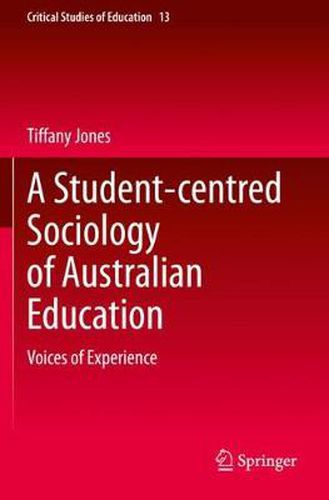Readings Newsletter
Become a Readings Member to make your shopping experience even easier.
Sign in or sign up for free!
You’re not far away from qualifying for FREE standard shipping within Australia
You’ve qualified for FREE standard shipping within Australia
The cart is loading…






This title is printed to order. This book may have been self-published. If so, we cannot guarantee the quality of the content. In the main most books will have gone through the editing process however some may not. We therefore suggest that you be aware of this before ordering this book. If in doubt check either the author or publisher’s details as we are unable to accept any returns unless they are faulty. Please contact us if you have any questions.
This book is based on a comparative study from 2018, of four different approaches to education, according to 2,500 Australians’ experiences of them, on a range of topics. It shows that whilst the critical approach has strong research-based support across the board, sometimes a liberal, conservative or post-modern approach may have some merit for certain outcomes. This is a book about challenging our biases and calling on ourselves to aim higher for education, than what our own pre-conceived ideas might allow.
What and who is valued in education, and the social roles and identity messages learned, differ wildly from school to school. Education is most impacted by the orientation of education dominant in that context - whether conservative, liberal, critical or post-modern. These terms are often used with little practical data on the real-life schooling they entail. Who learns what in which approach? Who learns best with which approach, on which topic and why? This book provides this previously missing information. It offers holistic, detailed descriptions of conservative, liberal, critical and post-modern approaches to education broadly. It provides statistics and stories from real students on how the four approaches work practically in schools in relation to: age, gender, sexuality, social class, race, news-media, popular culture and technology. Chapters offer background information to the four perspectives, data from student participants, tutorial questions and activities, and suggestions for further reading.
$9.00 standard shipping within Australia
FREE standard shipping within Australia for orders over $100.00
Express & International shipping calculated at checkout
This title is printed to order. This book may have been self-published. If so, we cannot guarantee the quality of the content. In the main most books will have gone through the editing process however some may not. We therefore suggest that you be aware of this before ordering this book. If in doubt check either the author or publisher’s details as we are unable to accept any returns unless they are faulty. Please contact us if you have any questions.
This book is based on a comparative study from 2018, of four different approaches to education, according to 2,500 Australians’ experiences of them, on a range of topics. It shows that whilst the critical approach has strong research-based support across the board, sometimes a liberal, conservative or post-modern approach may have some merit for certain outcomes. This is a book about challenging our biases and calling on ourselves to aim higher for education, than what our own pre-conceived ideas might allow.
What and who is valued in education, and the social roles and identity messages learned, differ wildly from school to school. Education is most impacted by the orientation of education dominant in that context - whether conservative, liberal, critical or post-modern. These terms are often used with little practical data on the real-life schooling they entail. Who learns what in which approach? Who learns best with which approach, on which topic and why? This book provides this previously missing information. It offers holistic, detailed descriptions of conservative, liberal, critical and post-modern approaches to education broadly. It provides statistics and stories from real students on how the four approaches work practically in schools in relation to: age, gender, sexuality, social class, race, news-media, popular culture and technology. Chapters offer background information to the four perspectives, data from student participants, tutorial questions and activities, and suggestions for further reading.